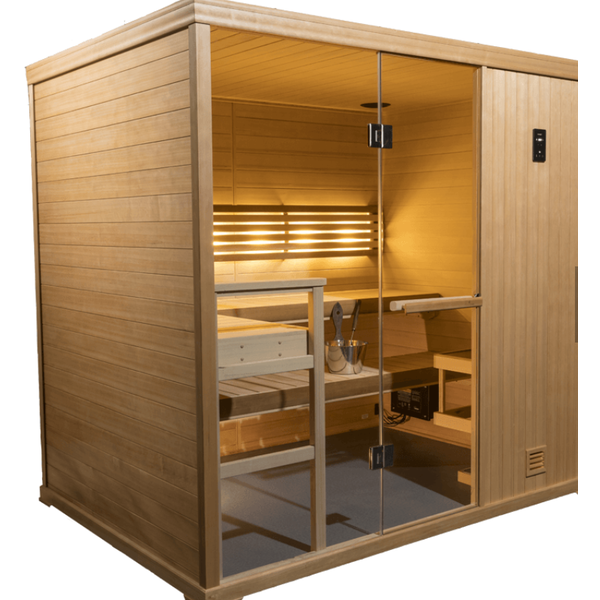The Difference Between Traditional & Infrared Saunas
While neither one is objectively superior to the other, there is a huge difference between the traditional sauna experience and the infrared sauna experience. It’s wise to educate yourself on the real differences between the two. Many people who enjoy traditional saunas think that they will enjoy the infrared sauna just as much, but most people prefer one style and do not enjoy the other as much because the experience is very different.
The following guide will highlight the differences, similarities and experiences of traditional saunas and infrared saunas so that you can get a better idea of which style you might prefer.

Traditional Saunas provide high heat and low humidity. Traditional saunas are not the same as steam rooms. Steam rooms fill up with wet steam and employ huge amounts of humidity. The traditional sauna provides mostly dry heat. But, most dry heat saunas also have heater rocks that may be splashed to create a single blast of steam that heats up the room quickly. The user controls how much humidity is present in the room by splashing more or less water on the rocks.
Traditional saunas usually operate between 150 and 190-degrees Fahrenheit. Traditional saunas will heat to full blast in 20 to 35 minutes. Bathers who prefer a longer, slower exposure to heat may not enjoy the immediate and lasting exposure to the extreme heat present in a traditional sauna.
Infrared Saunas usually operate at much lower temperatures, ranging from 120 and 140 degrees Fahrenheit. The heat is strictly dry heat and no humidity is present, except for the humidity already present in the home or sauna area. Whereas the goal in the traditional sauna is to reach high temperatures, the infrared room is built to emit levels of infrared light. When absorbed by the skin, infrared light turns into infrared energy, and infrared energy creates a heat that penetrates the skin and heats the muscles and joints.
The temperature in an infrared sauna is much less intense, but profuse sweating results from infrared exposure, just as it does in a traditional sauna. Infrared saunas heat up in about 10 to 20 minutes, but users must be exposed to rays for 12-20 minutes before beginning to sweat profusely. Because the heat is more bearable and slower to act, bathers usually spend more time in an infrared sauna than a traditional sauna. People who enjoy stepping into a blazing hot room may not enjoy the experience of an infrared sauna, as the infrared lights are not intense, and take time to penetrate the skin and heat up a bather.
Many manufacturers note that traditional saunas are more expensive to operate than infrared saunas. Electrical costs are a result of heater size and operating time, so these factors must also be considered. Most people use their sauna once or twice per week. While it is true that traditional saunas cost more cents per hour to run, the difference will not cause significant differences in electrical costs.
Join the Discussion:
Comments
No posts found

